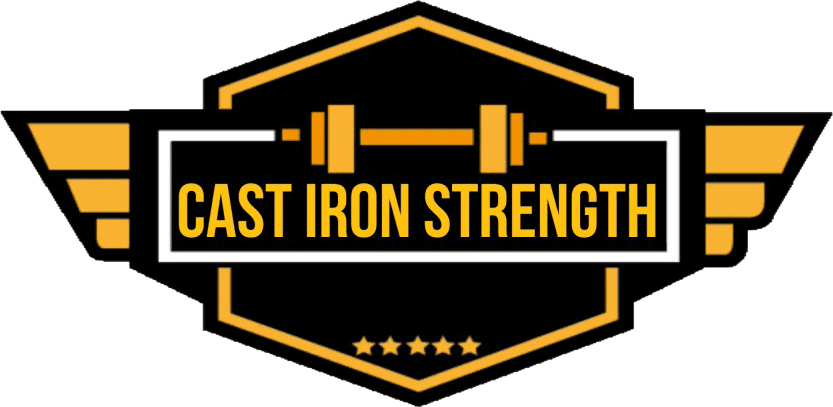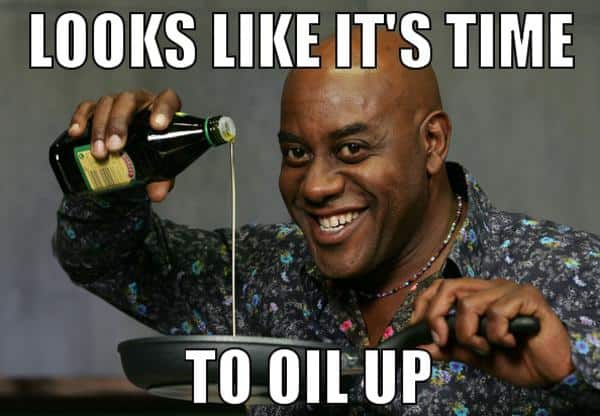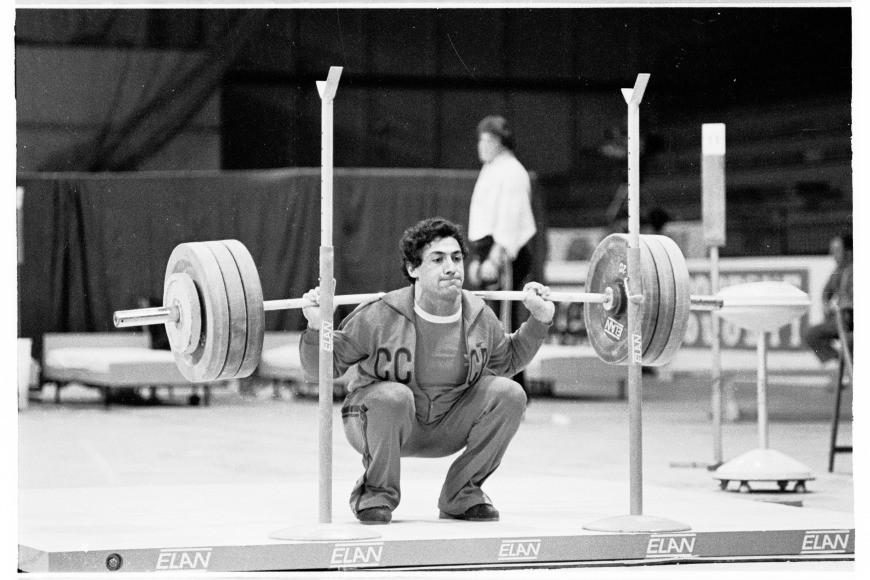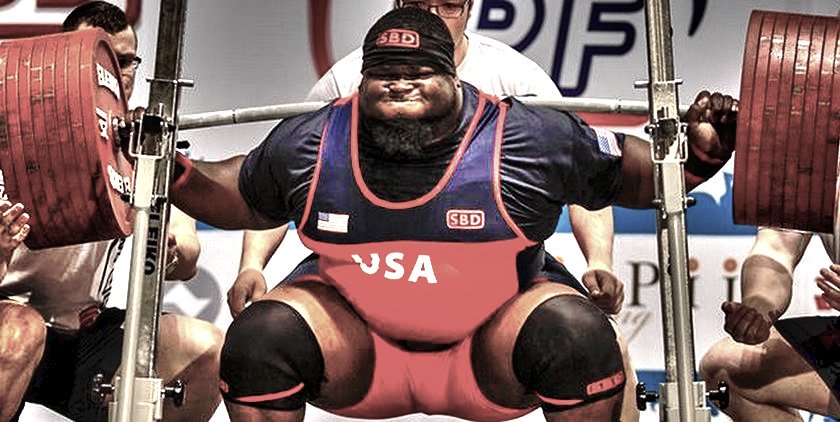After weight loss training to get jacked and tanned has to be the next most common training goal people have and just like weight loss most people over complicate the hell out of it. Before we go into some detail on the actual ins and outs of training for size we need to go into a bit of science. Once you grasp the paint by numbers science of muscle hypertrophy you will much better understand how to get swole as fuck.
What is muscle hypertrophy?
Wikipedia 2019
Muscle hypertrophy involves an increase in size of skeletal muscle through a growth in size of its component cells. Two factors contribute to hypertrophy: sarcoplasmic hypertrophy, which focuses more on increased muscle glycogen storage; and myofibrillar hypertrophy, which focuses more on increased myofibril size.[1]

Muscle hypertrophy is one of the bodies response to exercise it is generally associated with resistance training and bodybuilding but any exercise can cause hypertrophy if the person undergoing the exercise is detrained enough for it to have a big enough stimulus.
For example if you were bed bound for 2-3 months and had to re-learn to walk having someone help you to raise yourself out of your own bed a few times is going to be a big enough stimulus for you to not only get a strength gain but also to get a hypertrophy response. It is important to realise that training and training stress is a continuum once you are adapted to a routine or stress load it will cease to be effective after a number of exposures with each exposure becoming less effective.

- You engage in an exercise bout and induce muscle damage we will assume through weight training.
- Assuming the exercise stress was sufficient your body will work to repair the damaged tissue.
- If the stress was significant enough your body will work to adapt so next time it is more able to sustain that level of stress. One of these adaptations will be to increase the size of the muscle cells involved.
- This process takes place over a period of 24-72+ hours.
- Once your
body has completed this process it will break down the excess tissue if the level of exposure to this exercise stress is reduced significantly enough or removed.
That basically is the quick whistle stop tour of muscle hypertrophy obviously the ins and outs of the actual physiology is far more complex but for the purposes of understanding why you are manipulating exercise variables the above understanding is more than sufficient.

How do I get more jacked?
Now you have a basic understanding of how and why your body increases the size of a muscle you need to understand how to manipulate training variables to induce this adaptation reliably and effectively. The following is a basic
- When all is said and done the volume of training is the most effective training variable to induce and increase muscle size. It has been shown beyond a reasonable doubt and consistency that multiple sets are better than single sets and the more sets generally the more the hypertrophy response. This is on a graded curve meaning that adding more and more sets starts to have a diminishing positive effect after a point (generally speaking around 6 sets or more are probably excessive for one exercise).
- Muscle hypertrophy is specific to the activity. If you want to grow your upper chest you are going to need to do more incline pressing of some kind. You should have a variety of exercises in your session or week so you are
working muscle groups in a variety of planes of motion. - Training a muscle group 2 times per week is more effective than training it 1 time per week. Training 3x per week hasn’t been shown to be more effective than 2x per week at least according to the meta-analysis that I have cited.
- Training to failure not been shown to be more effective than not training to failure to induce hypertrophy or strength. This is a method we can use cyclically or sparingly and not something we want to rely on in our program on an indefinite basis as it increases fatigue drastically and increases the chance of overload injury.
- To make size gain a training goal we can strive towards for a sustainable and long period of time we need to also train for strength gain. There is a very well established relationship between muscle size and strength i.e. bigger muscles tend to be stronger muscles. Another reason for training for strength is that it is a good way of increasing volume by increasing the weight being used for the same sets x reps (volume load). If we just continue to increase volume (sets x reps) we are just ramping fatigue and DRASTICALLY increasing the chance of overuse injury down the road.
- Both long and short rest intervals seem to be effective for increasing muscle size with short rest intervals perhaps invoking more of
a metabolic stress and longer rest allowing for higher volume load to be used and heavier weights during the session promoting both strength and size gain. - Repetition duration (or tempo) do not seem to be very important for muscle hypertrophy with a wide range of speeds producing similar results however longer duration reps (>10 seconds) appear to be inferior for hypertrophy results.
- Some novel approaches such as blood flow restriction training have been shown to be effective for inducing muscle size both with low load and higher repetitions and higher load lower repititions
Using the above information we can put together a training schedule that allows us to take advantage of some of the above and to avoid some of the pit falls.

Putting together a long term plan to get swole and outta control.
Like any good training regime we need to separate our training out into distinct phases or periods that focus on certain elements and help us to do better in the following elements. As always the below is a skeleton and you will be better suited if you can individualise these protocols to your own training response (some people will be able to progress on any given protocol for 6-8 weeks while others might only respond for 3-4 weeks before they need to change what they are doing or rest and recover.
We will use the following sequence to help us gain size repeatably.
- Phase one – Strength Endurance and general preparation – 4 weeks.
- Phase two – Hypertrophy/Strength – 5 weeks
- Phase three – Strength/Hypertrophy – 5 weeks
- Phase four – Recovery – 3 weeks
- At the end of this 17 week
protcol you should look to start the process again. We will discuss some factors you might want to change/improve upon for the next trainingperoid .
Phase one – Strength endurance and general preparation
- 4 Sessions per week.
- 10-15 rep range
- 2-4 sets per exercise
- 120-150 sec rest per set
- Exercise selection low skill and compound.
- 2-3 Compound focus per session, 1-2 compound secondary, 2-3 isolation movements
- Split – Session 1+3 – Chest, Lats, Quads, Calves – Session 2+4 – Shoulders,
Upperback , Hamstrings/Glutes, Arms - Week 1-3 – Linear increase for 15 reps to 10 reps. 40-60% RM. Week 4 – Deload.
- Novel intervention – blood restriction finishers.
| Target Muscle Group | Compound Focus | Compound Secondary | Assistance/Isolation |
| Shoulders | DB Shoulder Press | Machine Shoulder Press | Delt Raise |
| Chest | DB Bench press | DB Incline Press | Cable Fly |
| Lats | Chin up | Pulldown | Straight arm pulldown |
| Upper back | DB Row | Machine Row | Rev Fly |
| Quads | SSB Squat | Hack Squat | Leg Ext |
| Hamstrings/Glutes | RDL | Barbell Thurster | Hamstring Curl |
| Calves | Standing Raise | Seated Raise | Single leg raise |
| Arms | DB Curl | Rolling DB Press | Cable Curl + Push down |
Phase two – Hypertrophy/Strength
- 4 Sessions per week.
- 8-12 rep range
- 3-5 sets per exercise
- 150-180 sec rest per set
- Exercise selection medium skill and compound.
- 2-3 Compound focus per session, 1-2 compound secondary, 2-3 isolation movements
- Split – Session 1+3 – Chest, Lats, Quads, Calves – Session 2+4 – Shoulders, Upperback, Hamstrings/Glutes, Arms
- Week 1-4 – Linear increase for 12 reps to 8 reps. 55-75% RM. Week 5 – Deload.
- Novel intervention – As many rep as possible sets with 2 left in the tank
| Target Muscle Group | Compound Focus | Compound Secondary | Assistance/Isolation |
| Shoulders | BB Strict Press | DB Shoulder Press | Front Raise |
| Chest | Bench Press | Incline BB Press | DB Fly |
| Lats | Pull up | Pulldown | |
| Upper back | Bench Row | DB Row | |
| Quads | High Bar Squat | Front Squat | Leg Press |
| Hamstrings/Glutes | No Touch Deadlift | Barbell Thurster | |
| Calves | Standing Raise | Seated Raise | Single leg raise |
| Arms | BB Curl | Close grip floor press | EZ Curl + French or JM Press |
Phase three – Strength/Hypertrophy
- 4 Sessions per week.
- 4-8 rep range
- 3-6 sets per exercise
- 180 or more sec rest per set
- Exercise selection core skill and compound.
- 2-3 Compound focus per session, 1-2 compound secondary, 2-3 isolation movements
- Split – Session 1+3 – Chest, Lats, Quads, Calves – Session 2+4 – Shoulders,
Upperback , Hamstrings/Glutes, Arms - Week 1-4 – Linear increase for 8 reps to 4 reps. 65-85% RM. Week 5 – Deload.
- Novel intervention – Rep outs to near failure (compound), rep outs to concentric failure (isloation).
Phase four – Recovery
- 4 Sessions per week.
- 10-12 rep range
- 2-3 sets per exercise
- 90-120 sec rest per set
- Exercise selection low skill and novel.
- 2-3 Compound focus per session, 1-2 compound secondary, 2-3 isolation movements
- Split – Session 1+3 – Chest, Lats, Quads, Calves – Session 2+4 – Shoulders, Upperback, Hamstrings/Glutes, Arms
- Week 1-3 – Linear increase for 12 to 10 reps starting low and working up to
a moderate stress. - Novel intervention – prolonged unloaded stretching sessions (yoga) or novel sessions such as swimming.
| Target Muscle Group | Compound Focus | Compound Secondary | Assistance/Isolation |
| Shoulders | Bottom up KB Press | One Arm DB press | Face pull |
| Chest | Press up | Close grip press up | Low incline KB Press |
| Lats | Pulldown | Straight arm pulldown | |
| Upper back | Inverted Row | Renegade Row | |
| Quads | Goblet Squat | Walking lunge | Leg Extension |
| Hamstrings/Glutes | KB Swing | Single leg hip extension | Leg Curl |
| Calves | Walking Calf Raise | Donkey Calf Raise | |
| Arms | Cable Curl | Cable Pushdown |
What to do next time
Once you have run through the cycle once or twice you should look to repeat the reps and exercise selections and the next run through to increase on your performance by using heavier weights for the sets than you did during the last run through. Going through this process 2-3 times should see you through a pretty productive training year.
After a few
This kind of training or systematic approach is how you should be approaching your training however as it will allow you to swap out things that aren’t working for things that might work. You should also keep a regular and detailed training diary so you are more clued up on your training interventions and results.
Naturally you will have a lot of questions on how this is implmented but that really is outwidth the scope of a free article. Hopefully however you now have a better understanding of the processes needed to increase muscle size and how you can manipulate them in your own training to help increase your success.
Marc
Further Reading
- Effect of training cessation on muscular performance: A meta‐analysis – https://onlinelibrary.wiley.com/doi/abs/10.1111/sms.12047
- Concurrent Training: A Meta-Analysis Examining Interference of Aerobic and Resistance Exercises – https://journals.lww.com/nsca-jscr/Fulltext/2012/08000/Concurrent_Training___A_Meta_Analysis_Examining.35
- Muscular adaptations in low- versus high-load resistance training: A meta-analysis – https://www.tandfonline.com/doi/abs/10.1080/17461391.2014.989922
- Effects of Resistance Training Frequency on Measures of Muscle Hypertrophy: A Systematic Review and Meta-Analysis – https://link.springer.com/article/10.1007/s40279-016-0543-The effect of protein timing on muscle strength and hypertrophy: a meta-analysis – https://jissn.biomedcentral.com/articles/10.1186/1550-2783-10-53
- Single vs. Multiple Sets of Resistance Exercise for Muscle Hypertrophy: A Meta-Analysis – https://journals.lww.com/nsca-jscr/Fulltext/2010/04000/Single_vs__Multiple_Sets_of_Resistance_Exercise.36.aspx
- Effect of Repetition Duration During Resistance Training on Muscle Hypertrophy: A Systematic Review and Meta-Analysis – https://link.springer.com/article/10.1007/s40279-015-0304-0
- Dose-response relationship between weekly resistance training volume and increases in muscle mass: A systematic review and meta-analysis – https://www.tandfonline.com/doi/abs/10.1080/02640414.2016.1210197
- Effects of Low- vs. High-Load Resistance Training on Muscle Strength and Hypertrophy in Well-Trained Men – https://journals.lww.com/nsca-jscr/Fulltext/2015/10000/Effects_of_Low__vs__High_Load_Resistance_Training.36.aspx
- Effect of Training Leading to Repetition Failure on Muscular Strength: A Systematic Review and Meta-Analysis – https://link.springer.com/article/10.1007/s40279-015-0451-3
The effects of short versus long inter-set rest intervals in resistance training on measures of muscle hypertrophy: A systematic review – https://www.tandfonline.com/doi/abs/10.1080/17461391.2017.1340524- Muscular adaptations in low- versus high-load resistance training: A meta-analysis -https://www.tandfonline.com/doi/abs/10.1080/17461391.2014.989922
- Is repetition failure critical for the development of muscle hypertrophy and strength? -https://onlinelibrary.wiley.com/doi/abs/10.1111/sms.12445
- Magnitude of Muscle Strength and Mass Adaptations Between High-Load Resistance Training Versus Low-Load Resistance Training Associated with Blood-Flow Restriction: A Systematic Review and Meta-Analysis – https://link.springer.com/article/10.1007/s40279-017-0795-y













